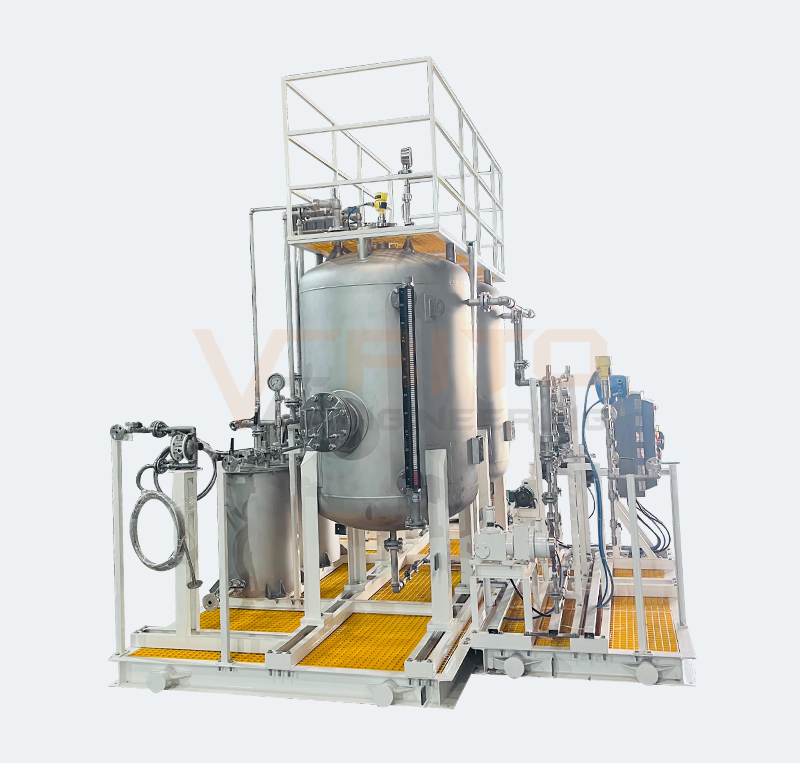
Get Your Free Quote…!


Purpose: Mercaptan Injection Packages is to add small amounts of mercaptan compounds to natural gas, propane, or other odorless gases to give them a distinct odor for the purpose of detecting gas leaks and preventing accidents.
Overview: Mercaptan dosing system is a system used in the oil and gas industry to inject mercaptan compounds into natural gas to give it a distinctive odor. This is done as a safety measure to alert people of the presence of gas in case of a leak.
Mercaptan is a sulfur-containing organic compound with a pungent odor that is easily detectable by the human nose at very low concentrations. By injecting mercaptan into natural gas, the odor of the gas is changed from being odorless to a distinctive rotten egg smell, which can be easily detected by people in case of a gas leak.














At Verito Engineering Private Limited, we specialize in providing comprehensive engineering analysis and calculations for Skid-Mounted Chemical Injection Packages, ensuring superior performance, reliability, and compliance with global industry standards.
Our expertise covers Finite Element Analysis (FEA), Computational Fluid Dynamics (CFD), Structural, Mechanical, Hydraulic, and Thermal Calculations for all critical skid components, including:

| Pressure Vessel Calculations | API 675-Compliant Dosing Pump Selection & Sizing | Agitator & Mixing Calculations (For Chemical Preparation Skids) |
|---|---|---|
|
|
|
| Automation & Instrumentation for Optimized Operations | Piping Stress & Pressure Calculations | Structural & Skid Frame Analysis |
|
|
|
| Strainer Calculations | Safety & PSV Sizing Calculations | Injection Quill |
|
|
|
| Material Selection & Corrosion Analysis | Operational Efficiency & Cost Reduction | |
|
|
The mercaptan dosing system typically consists of a storage tank for the mercaptan compound, a metering pump, injection points, and monitoring equipment to ensure the correct dosage of mercaptan is being injected into the natural gas. The system is designed to be reliable, accurate, and easy to operate, to ensure that the natural gas is safely and effectively odorized.
Supplied to:(1) One of the Largest oil and gas companies in India, and it operates across the entire hydrocarbon value chain.
Project:
(1) Indian Oil Corporation Ltd (IOCL), kochi
(2) Aegis Vopak
Terminals Ltd., Rajula Amreli
Technical Aspects: – Available in ATEX, CE, ASME, API, IS…..etc.